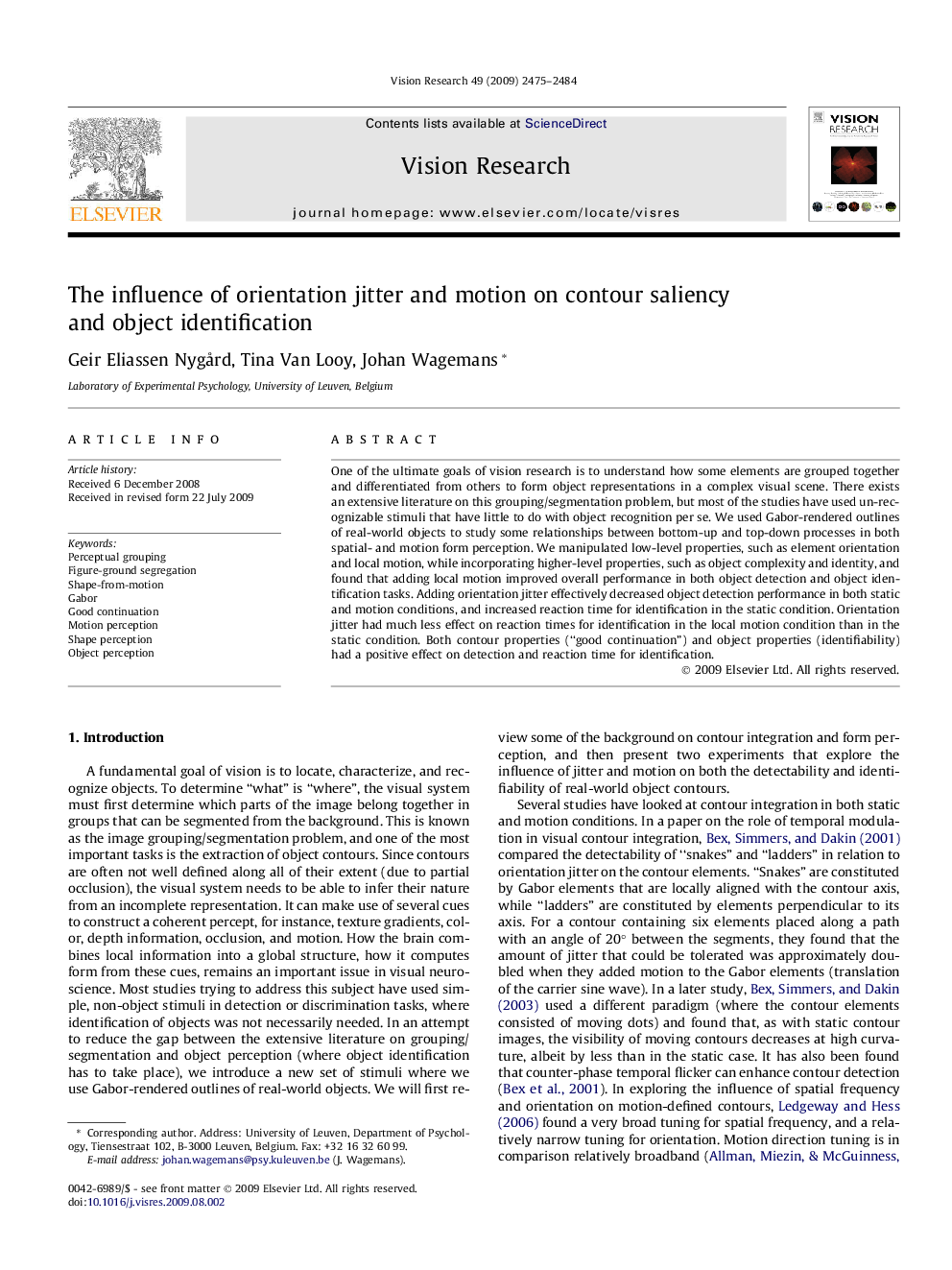| Article ID | Journal | Published Year | Pages | File Type |
|---|---|---|---|---|
| 4034674 | Vision Research | 2009 | 10 Pages |
One of the ultimate goals of vision research is to understand how some elements are grouped together and differentiated from others to form object representations in a complex visual scene. There exists an extensive literature on this grouping/segmentation problem, but most of the studies have used un-recognizable stimuli that have little to do with object recognition per se. We used Gabor-rendered outlines of real-world objects to study some relationships between bottom-up and top-down processes in both spatial- and motion form perception. We manipulated low-level properties, such as element orientation and local motion, while incorporating higher-level properties, such as object complexity and identity, and found that adding local motion improved overall performance in both object detection and object identification tasks. Adding orientation jitter effectively decreased object detection performance in both static and motion conditions, and increased reaction time for identification in the static condition. Orientation jitter had much less effect on reaction times for identification in the local motion condition than in the static condition. Both contour properties (“good continuation”) and object properties (identifiability) had a positive effect on detection and reaction time for identification.
